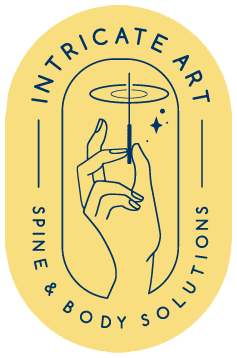
Dry Needling and Joint Manipulation to Treat and Resolve Benign Paroxysmal Positional Vertigo (BPPV)
Benign Paroxysmal Positional Vertigo (BPPV) is the most commonly diagnosed vestibular pathology. Doctors of Physical Therapy, certified vestibular therapists, and medical doctors alike, believe that it is an incredibly overdiagnosed condition. Before understanding how BPPV is misdiagnosed, it is important to know how to properly diagnose the condition.
When the appropriate positional diagnostic maneuver is performed on a patient with true BPPV, complaints of vertigo and presence of nystagmus would signal a positive test. A positive test warrants the corresponding corrective maneuver, which achieves highly effective results, nearly instantaneously, about 90% of the time.
There are a large number of people who experience debilitating dizziness without inner ear pathology; these people should be more accurately diagnosed with sympathetic autonomic nervous systems (SANS) hyperactivity and cervicogenic dizziness. Dry needling in combination with joint manipulations are highly effective tools to achieve rapid meaningful results through autonomic nervous system homeostasis and alleviate cervicogenic dizziness.
There are many instances when a patient will present with a prescription saying “evaluate + treat BPPV”.
During the subjective intake, there are complaints of dizziness, likely stress, postural deficits, and a story about the various ways symptoms are provoked. Then the therapist performs a Dix-Hallpike or Roll Test to assess which part of the inner ear is pathological. When the positional tests are performed there are complaints of vertigo without the presence of nystagmus. This means the prescription is likely inaccurate, or missing a piece; Dizziness or loss of balance can be present with or without nystagmus with both BPPV and cervicogenic dizziness. If the corrective ear canal maneuver's do not resolve the problem, the cause is likely not related to the inner ear. It is more likely related to sympathetic autonomic hyperactivity, disruption of the trigeminocervical complex, and dysregulation of the autonomic nervous system. Remember, the overwhelming majority of people are living with chronic sympathetic autonomic hyperactivity.
NOTE: In a comprehensive vestibular therapy examination, there are many tests performed. For the sake of this blog, consider there is no other major vestibular pathology present; testing only showed a questionable BPPV positional test.
Although it is not uncommon for there to be discrepancies between clinical diagnoses, the effectiveness of treatment strategies matters most. With traditional BPPV, the corrective maneuvers can sometimes feel supernatural due to the dramatic relief of symptoms. If the condition is not really BPPV, the treatment is ineffective and another intervention is needed. In the event SANS hyperactivity and cervicogenic dizziness are disguised as BPPV, a similarly effective and equally fantastic treatment is available: dry needling coupled with joint manipulation.
With SANS hyperactivity, dry needling and joint manipulations can achieve autonomic nervous system homeostasis by stimulating the parasympathetic dominant areas of the body - craniosacral spinal regions, vagus nerve in the ear, and parasympathetically innervated muscles (suboccipitals, cranial muscles, glutes, pelvic floor to name a few groups). Additionally, if the dizziness is cervicogenic in nature, dry needling and joint manipulation could release myofascial trigger points, reduce muscular tension, alleviate joint adhesions, and improve movement restrictions that contribute to excessive tension on the skull. The highly effective combination of dry needling and joint manipulation dramatically reduces the amount of pathological tissue in the body, improves tissue irritability levels, and restores function to those seeking vestibular rehabilitation.
As clinicians, it is an obligation to think about what is best for patients above anything else. Even though a prescription might diagnose BPPV, it is important to verify. Through a careful examination, it is easily discernible if it is truly BPPV or, likely, cervicogenic dizziness and SANS hyperactivity. In the event that it is BPPV, the appropriate correctional maneuvers are warranted for a swift recovery. For quick and effective results to treat cervicogenic dizziness and SANS hyperactivity, dry needling with joint manipulations should be used.
Gabriel Pallante PT, DPT, IAMTC, IADN Cert. Specialist
DISCLAIMER: The content on the blog for Intricate Art Spine & Body Solutions, LLC is for educational and informational purposes only, and is not intended as medical advice. The information contained in this blog should not be used to diagnose, treat or prevent any disease or health illness. Any reliance you place on such information is therefore strictly at your own risk. Please consult with your physician or other qualified healthcare professional before acting on any information presented here.



